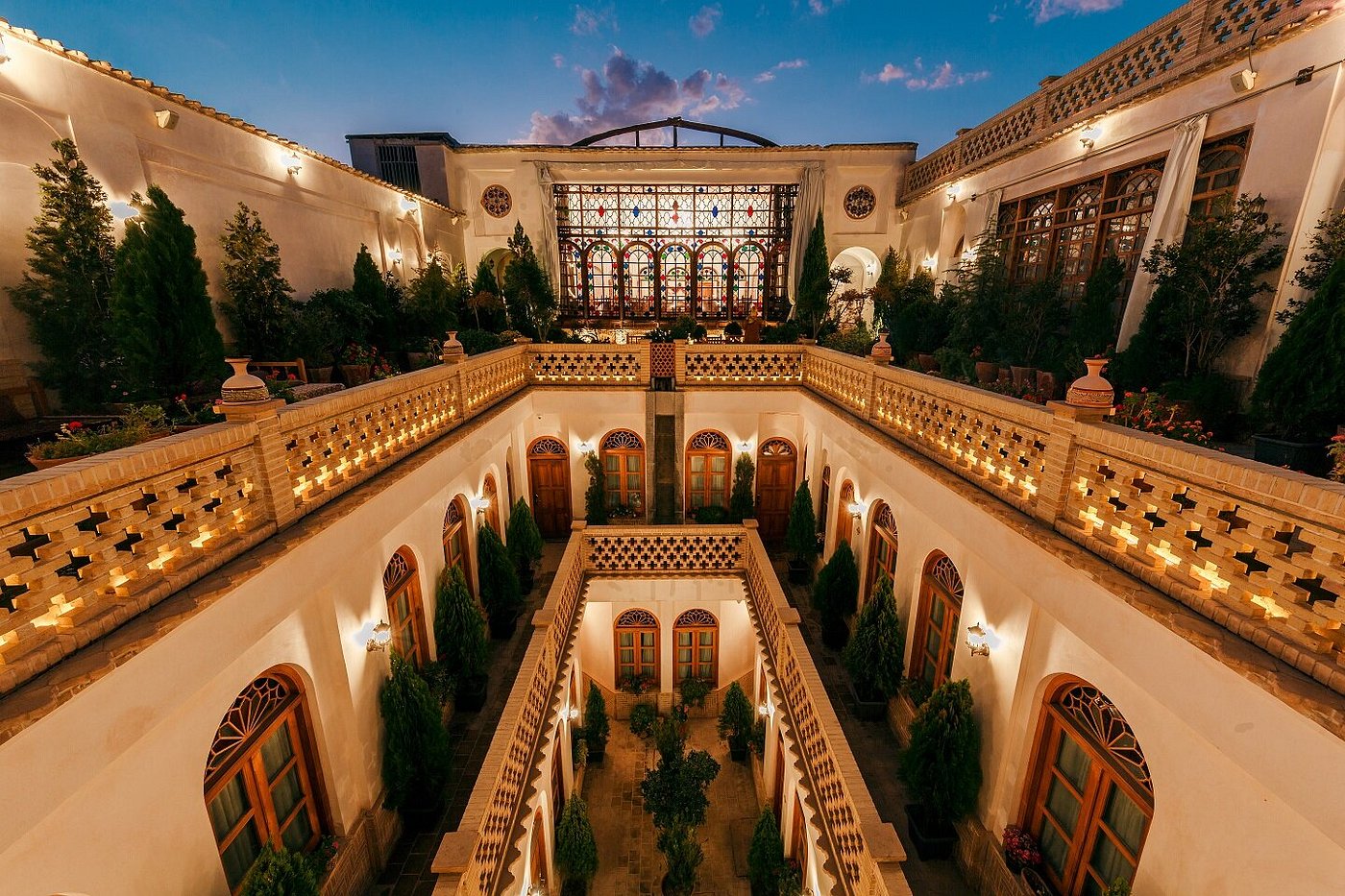With its roots tracing back to the Safavid dynasty, Qazvin has a rich historical and cultural heritage that has left an indelible mark on its present-day identity. Renowned as the calligraphy capital of Iran, Qazvin exudes an air of artistic elegance, evident in its traditional confectioneries, intricate carpet patterns, and flourishing poetry scene. The city’s political significance and influence on the Pahlavi accent add layers to its multifaceted charm.
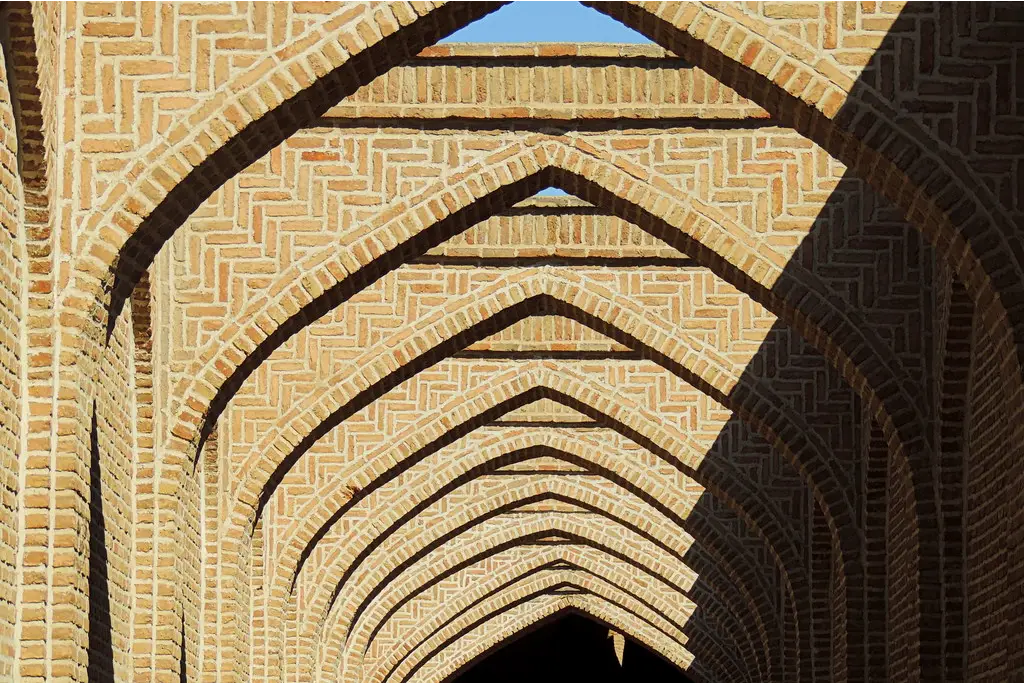
As you walk through its bustling streets, you’ll encounter remnants of its storied history intertwined with the pulse of modern life. Situated approximately 150 kilometers northwest of Tehran, Qazvin’s lofty altitude of about 1,800 meters above sea level lends it a unique climate characterized by chilly yet dry weather, owing to its strategic location south of the rugged Alborz range. Join us as we explore the must-visit attractions in Qazvin.
Alamut Castle
Alamut Castle stands majestically on the heights, surrounded by massive precipices and deep crevices. Access to the castle is limited to a narrow trail to its north. The castle consists of an eastern and western sector, each further divided into lower and upper segments. The structure spans approximately 120 meters in length and varies in width from 10 to 25 meters in different areas. The upper castle’s eastern rampart, built from stone and gypsum, rises about 10 meters long and 5 meters high. To the northwest, chambers carved into the mountains contain a small water pool.
The northern rampart extends 12 meters and ends at a steep drop. The eastern section once housed guards and their families, while the western rampart still stands at 2 meters high. Three water reservoirs are carved into the mountains, and ramparts divide the area between the upper and lower castles. Three towers are located at the northern, southern, and eastern corners. The only entrance is northeast, reached via a path below the eastern tower.
Constructed from stone, mortar, gypsum, brick, tiles, and earthenware, Alamut Castle is a significant historical site near an ancient cemetery and remnants of brick kilns. Built during the Abbasi caliph Al Motevakel’s reign, It is also a significant archaeological site.
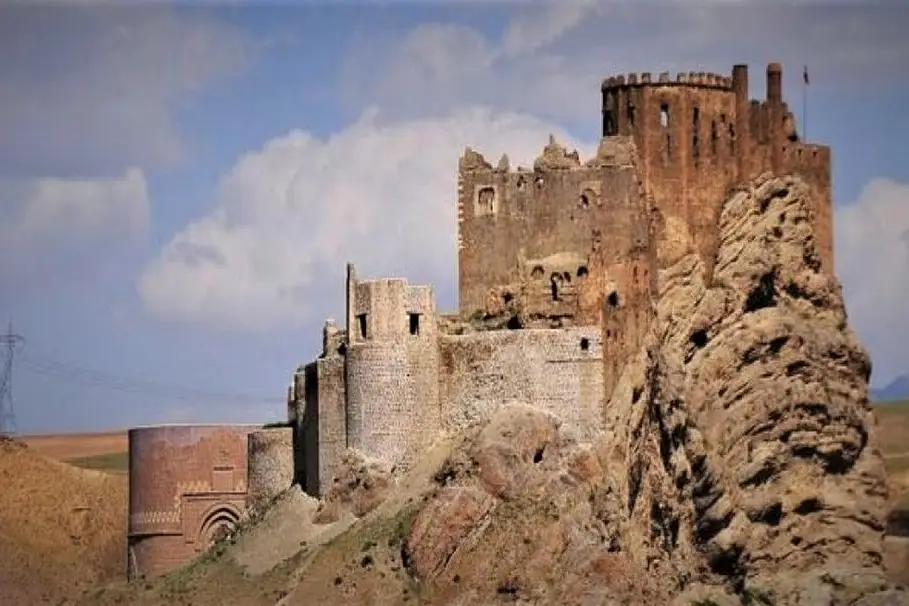
Tomb of Hamdallah Mustawfi
The Tomb of Hamdallah Mustawfi, also known as the tall dome, is situated in the Panbeh Reeseh locality of Qazvin. Hamdollah Mostowfi, a renowned geographer from the Mostowfian dynasty, was born in 680 AH in Qazvin and died around 750 AH. The tomb, a relic of the Mongol era, features a square base that transitions into an octagon and then a cylindrical upper section.
The structure includes a vaulted segment and a conical brick dome. The western entrance has a wooden door, leading to a basement tomb covered by a quadrangular chamber with turquoise-tiled cornices. Sacred verses in the Naskh script adorn the dome’s base, while the stone floor and brick ceiling highlight the tomb’s architecture. The vaulted segment, renovated due to damage, contains an azure inscription in the Nasta’liq script detailing Mostowfi’s biography. This historic mausoleum reflects the rich cultural heritage of the Mongol period.
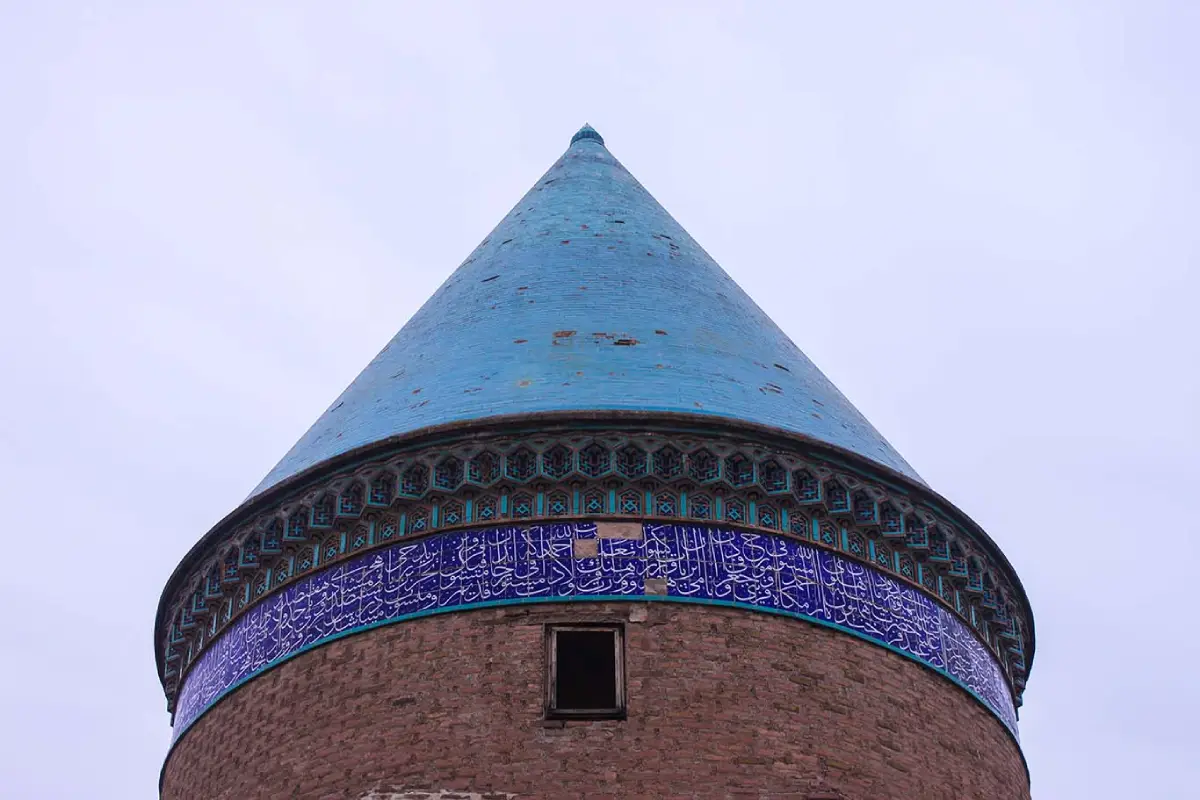
Kharaqan Towers
The Kharaqan Towers, dating back to the Seljuk era, are built over the tombs of notable Seljuk figures Abu Saeed Bijar and Abu Mansour Iltay. Located 1 km from Hesar Armani village and 32 km along the Qazvin-Hamadan Road, these towers are close yet positioned in a vast area. The eastern tower, octagonal with round pillars at each corner, was repaired in 1968. The tower is made entirely of bricks and features decorative internal arch designs and a double-crusted dome from the 5th century AH. An inscription at the entrance reveals the construction date and architect’s name, Mohammad Ebne Mokr Zandjani Al Qobba, in 460 AH.
The western tower, octagonal with round columns, displays prominent brick ledges and geometrical designs on the upper dome. Below is a narrow inscription indicating the construction date and architect. Although significantly damaged by the 2002 Bou’in-Zahra earthquake, the towers were well-preserved before this event, showcasing historical architectural excellence.
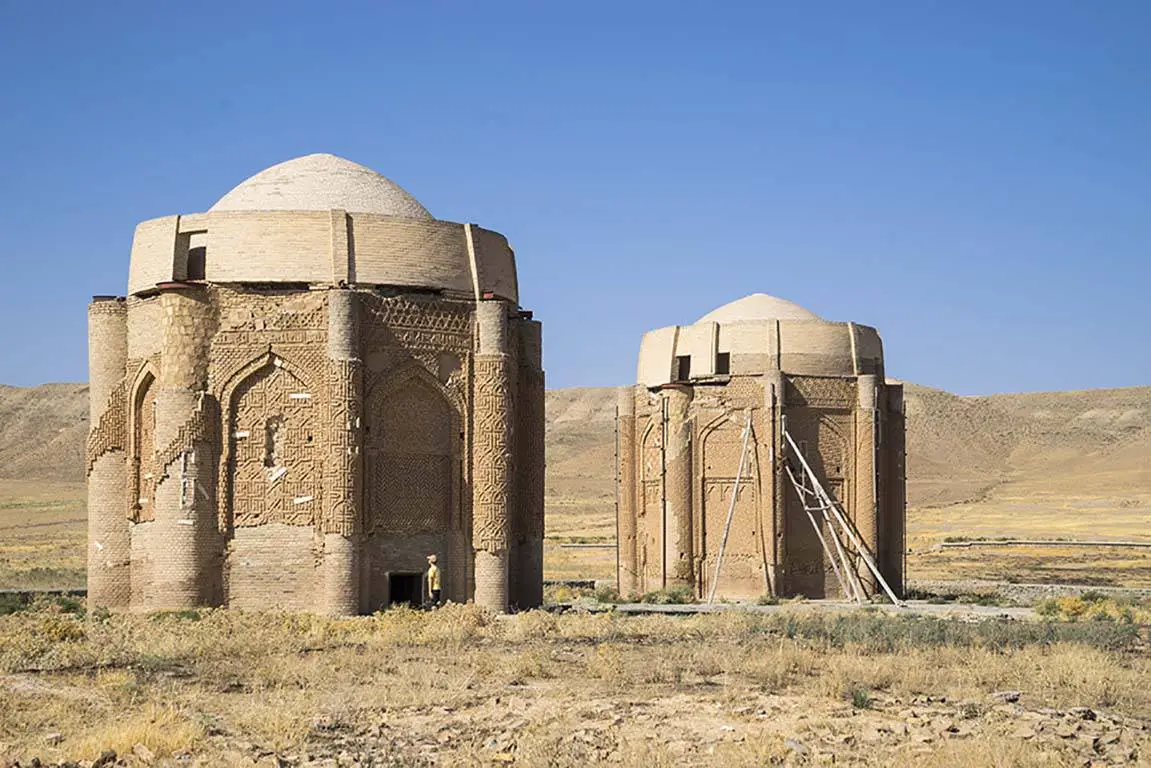
Sheikholeslam Mosque and School
Sheikholeslam Mosque and Historical School, or Masoudieh Mosque, is located on Shohada Avenue in Qazvin. Built under the orders of Turkaman chieftain Amir Aqasi, the structure was renovated in 1321 AH and transformed into a mosque and school. Made of brick, the building features a western entrance leading to the school’s small courtyard.
The large entrance displays an arched ceiling, and the square courtyard is surrounded by chambers used as residences or tutorial spaces for novice clergy. This historic site highlights the architectural and educational significance of the period, reflecting the blend of religious and academic purposes.
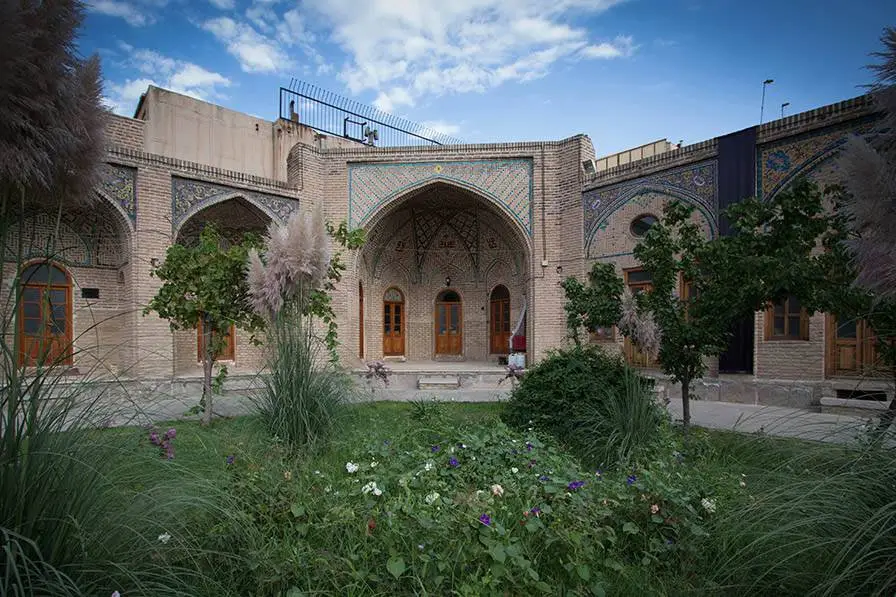
Kafar Gonbad Dome
The Kafar Gonbad Dome, near the villages of Aloulak and Niraq, is an octagonal structure with a stone plinth and brick construction. Three doorways are on three sides, with steep arches on the northern and western entrances. A crescent-shaped portal is present on the eastern wall. The circular dome’s remains are still visible atop the structure.
False arches with sharp ends and plaster frameworks reinforced with brick are found on each side, creating a circular formation. Dating back to the 6th or 7th century AH, the Kafar Gonbad Dome stands as a testament to the architectural ingenuity and historical significance of the era.
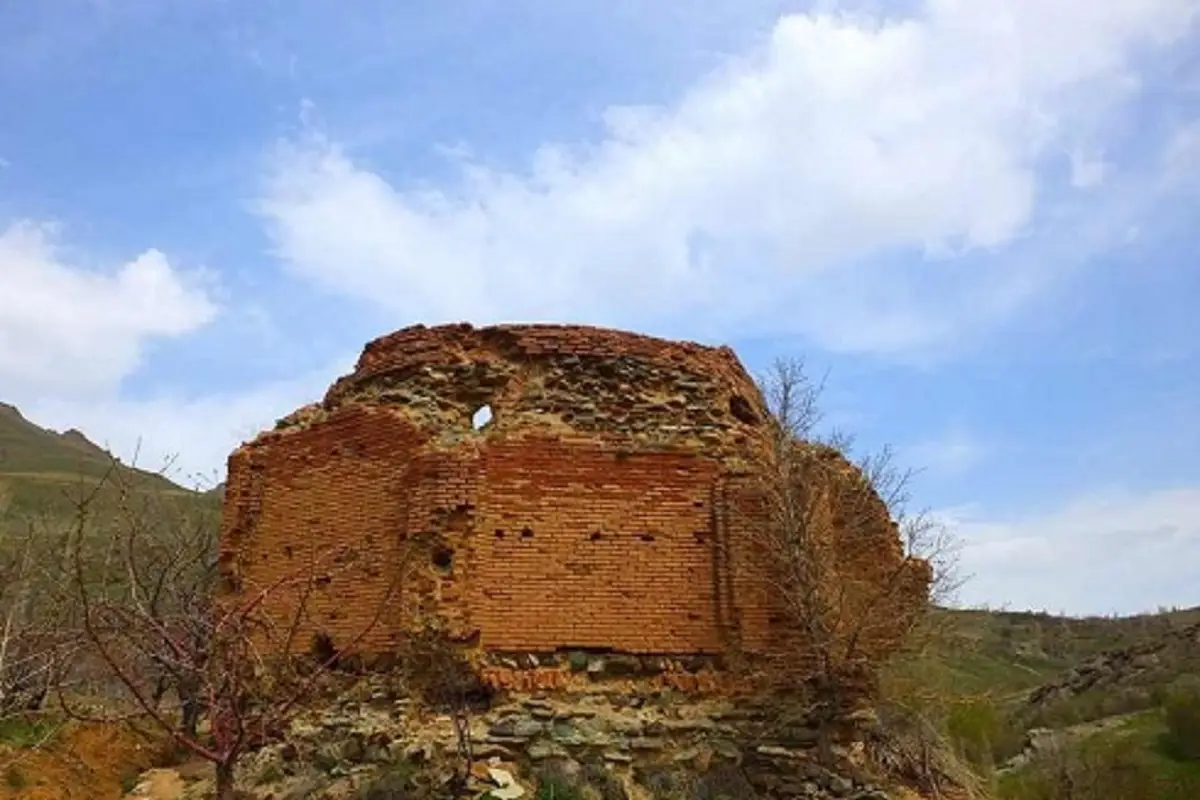
Ovan Summit (Khashchal Mountain)
Ovan Summit, also known as Khashchal Mountain, is a prominent peak rising to about 3,750 meters within the Alborz Mountain Range north of Roodbar. This peak connects to the Sialan summit in the southwest and to the Bazakooh and Parch Kooh Mountains in the northwest. The mountain is the source of several rivers, including the Azgin, Sefid Ab, and Avan Rivers in the southern highlands and the Chalak River in the north.
At the southern base of the mountain lies the picturesque Avan Lake, fed by natural springs. The mountain offers various ascending routes from different fronts, including the western route from Qazvin Moallem Kellage, the northern route from Tonekabone Shir Rood and Chalak River Valley, and the southwestern route from Sialan and Garm Kooh Gorge. The stunning natural beauty and challenging terrain make Ovan Summit a notable destination for nature enthusiasts and adventurers.
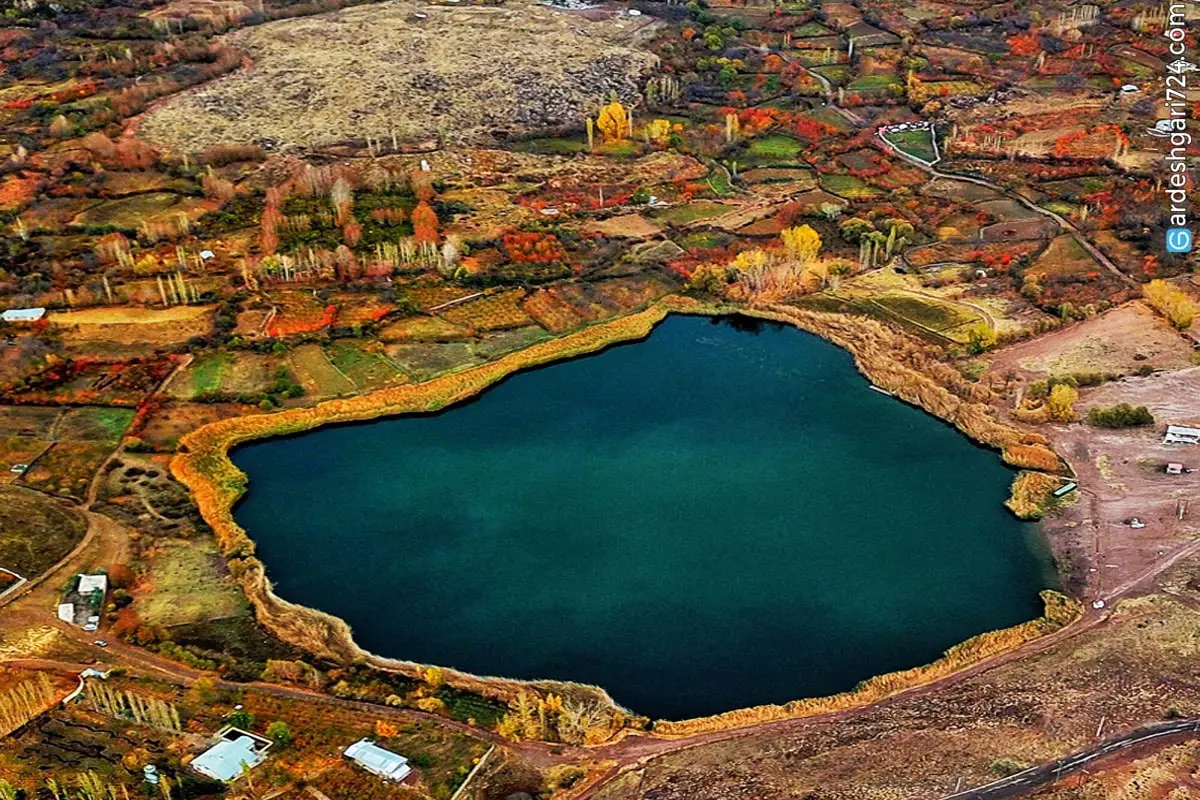
Safa Traditional Bath
Safa Traditional Bath, also known as Haj Mohammad Rahim Bath, is situated on Molavi Avenue in Qazvin and features separate chambers for men and women. Constructed in 1259 AH by Haji Hassan Ebne Haji Abdollah Tabrizy, this bathhouse has been transformed into a traditional teahouse and restaurant. The bathhouse’s architectural elements include a central pool with marble lions, a domed ceiling supported by columns in the clock room, and polished marble floors and walls throughout the facility.
The hot chamber features a similar domed ceiling design. The materials used in its construction, such as stone, brick, marble, and mortar, highlight the craftsmanship of the period. Originally built to be the finest bathhouse in Qazvin and one of the best in Iran, it reflects the socio-economic position and interests of its founder, Haj Mohammad Hassan. The bathhouse’s intricate design and historical significance make it a fascinating site for visitors interested in traditional Persian architecture and history.
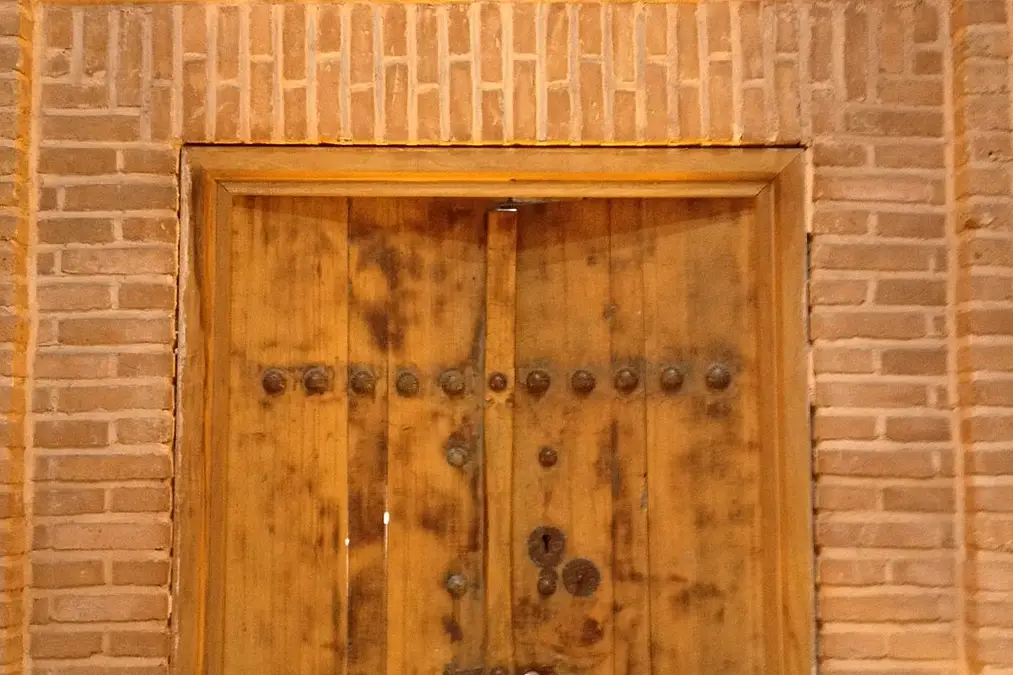
Sanjideh Mosque
The Sanjideh Mosque in Qazvin, built on a former fire temple site during the Seljuk period, features a conical arch and a distinctive Seljuk-style dome. Despite the disappearance of the adjoining school and significant damage to the internal inscriptions, the mosque retains its historical majesty and structural solidity. Inside, a valuable epigraph with prayers to Imam Ali is partially preserved, and the mosque houses a low minaret and muqarnas decorations under the dome.
An enigmatic tombstone named Hassan lies within the mosque’s oldest section, reminiscent of ancient Iranian mithraeums. The mosque’s courtyard features a rhomboidal water basin, adding to its historical and architectural intrigue. The Sanjideh Mosque’s enduring presence and unique design offer a glimpse into the religious and cultural heritage of the Seljuk era.
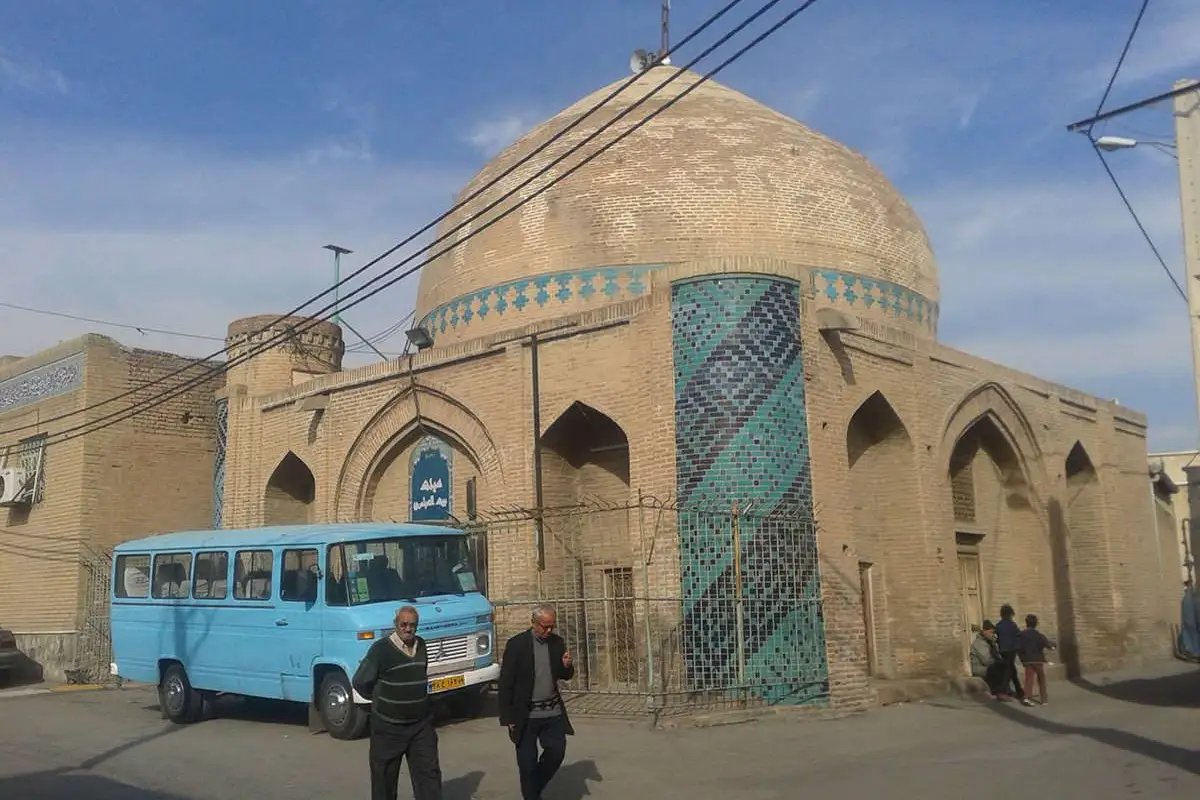
Kabir Jame Mosque
Kabir Jame Mosque, located on Shohada Avenue in Qazvin, dates back to the Saljuqi and Safavid periods. The mosque features a large rectangular courtyard with a central pool and elevated porches on all four sides. The northern porch is flanked by two striking minarets, and each side of the porch has long porticos. The most ancient part of the mosque is a small domed structure leading to the eastern entrance corridor, known as the Harooni arch, constructed in 192 AH under Haroon-Ol Rashid.
The mosque also has a double brick dome from the Saljuqi era, which is considered an architectural masterpiece. Significant additions, such as the Khomar Tashi area and the nocturnal sections, were made during the 6th century AH. The porch and platform in front of the domed Saljuqi area were built in 1069 AH during the Safavid period. The northern porch and its minarets have undergone numerous repairs, reflecting the mosque’s ongoing historical significance and architectural grandeur.
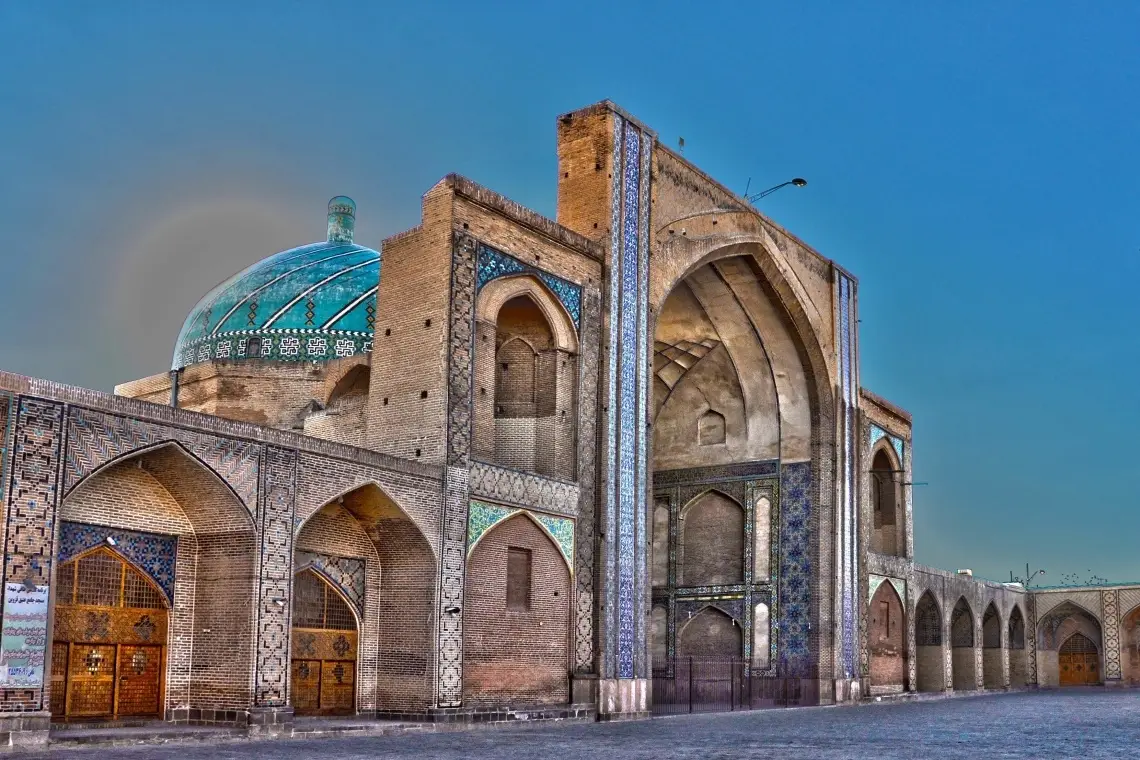
Imamzadeh Shahzadeh Hossein
Imamzadeh Shahzadeh Hossein in Qazvin is the resting place of Hossein, the son of Hazrat Ali Ebne Moosa-Al Reza (AS), who passed away in 201 AH. The original structure dates back to the era of Shah Safi, with the earliest dated element being a wooden sepulcher from 806 AH. The mausoleum has undergone renovations, especially in the early 14th century AH. The complex includes an entrance, a courtyard, and the mausoleum itself.
The entrance features intricate geometric tilework and is flanked by minarets. The main dome is centrally positioned among four porches. Inside the courtyard, a large octagonal structure serves as a water source, with an inscription on top. The mausoleum’s walls have false arches, enhancing its architectural beauty. The overall structure resembles a castle, providing visitors a significant historical and religious site.
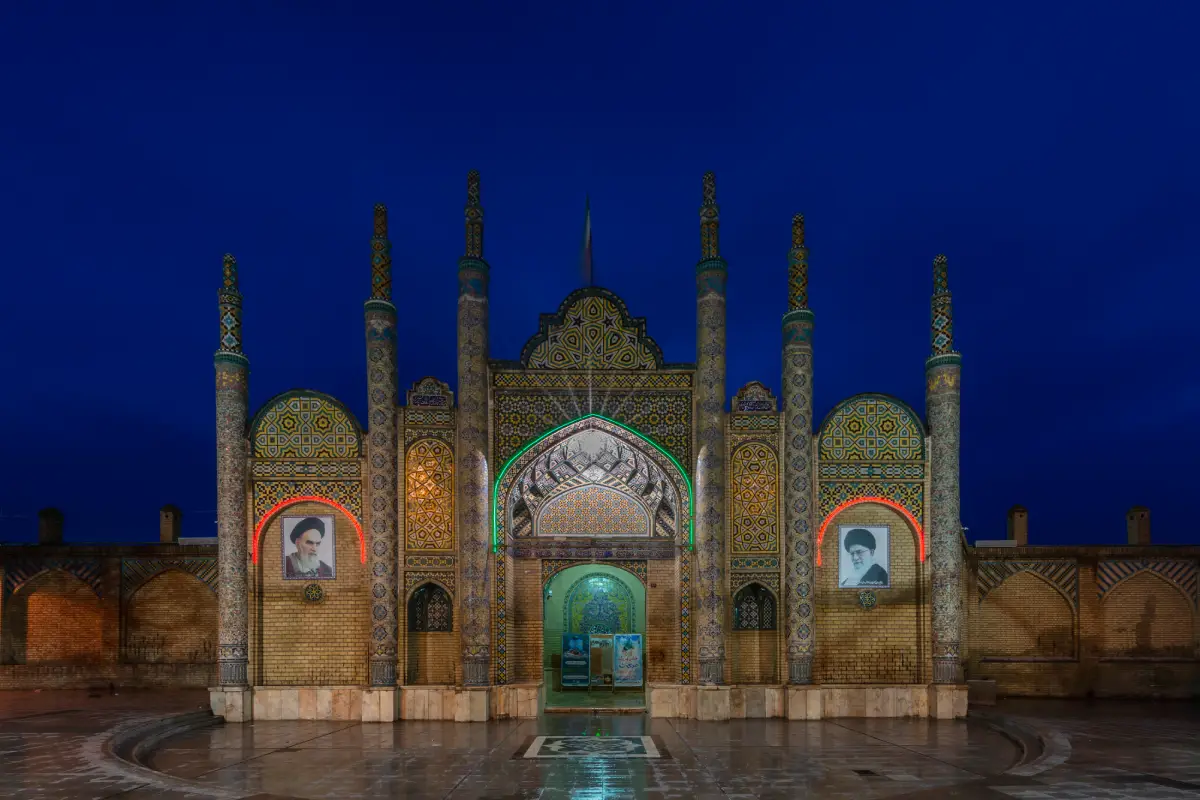
Qazvin Bazaar
Qazvin Bazaar, a remnant of the Safavid period, showcases remarkable architectural elements. The bazaar originated in pre-Safavid times and saw significant expansion during the Safavid dynasty. Each alley was designated for a specific guild, and every segment included a mosque, bath, and arcade. The Qeisarieh section has four entrances leading to various arcades and intersections. Notable areas within the bazaar include the Sarbaz Arcade, its double-story structure and arched entrance adorned with hunting scenes and floral designs on yellow and pink tiles.
The Covered Arcade, a two-story structure, is located south of Qeisarieh, while the Haj Sayed Kazem Arcade, opposite the leather merchant alley, is currently a hub for leather products. The Razavi Arcade, constructed by Haj Seyed Abol Qasem Razavi Esfahani, is known for timber trading. The Dervish Mehdi Arcade and Haj Mohammad Taqi Arcade are areas for dispatching goods and merchandise. This vibrant bazaar remains a testament to Qazvin’s rich commercial history.
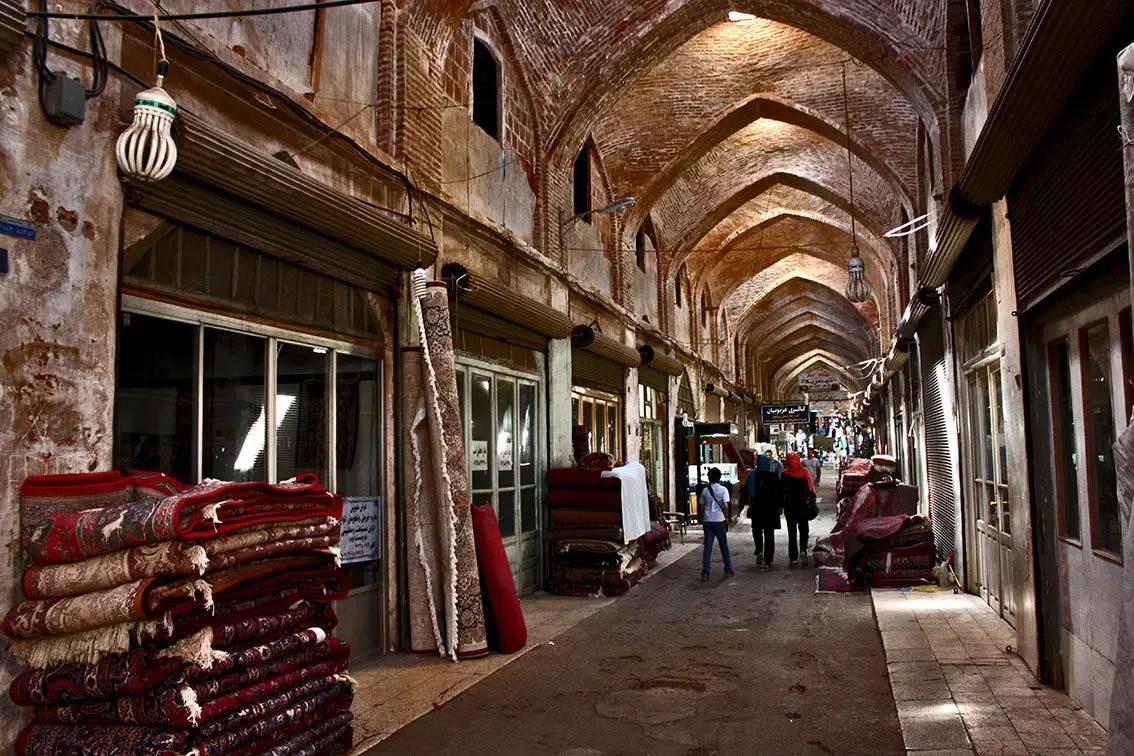
Lambsar Castle
Lambsar Castle, also known as Lamasar, Lambasar, or Lambesar, was likely the largest and most fortified of the Ismaili castles. Located in the central Alborz mountains and about 120 km from Tehran, this fortress stands northeast of Razmian village. Kiya Buzurg Ummid, appointed by Hassan-i Sabbah, captured the castle from Rasamuj and transformed it into a formidable stronghold with local labor. Today, only ruins remain, but the deep valleys surrounding it make it nearly inaccessible from the east and west. The north and south fronts offer the only possible entry points, with the castle stretching 480 meters from north to south and spanning 190 meters in width.
The imposing two-layered parapets, made of 10-meter-high stones, and the main northern building with 1.2-meter-thick stone walls and remarkable water reservoirs and grain stores in the southern parts highlight the castle’s strategic and architectural ingenuity. Lambsar Castle played a crucial role as a defensive stronghold against the Mongol invasions in its final days. Despite a resilient defense, a cholera epidemic led to its fall in January 1257, followed by Hulaku Khan’s order to destroy the fort and execute the survivors. Subsequent attempts to recapture the castle in 1275 and 1389 were short-lived, marking the end of this significant historical fortress.
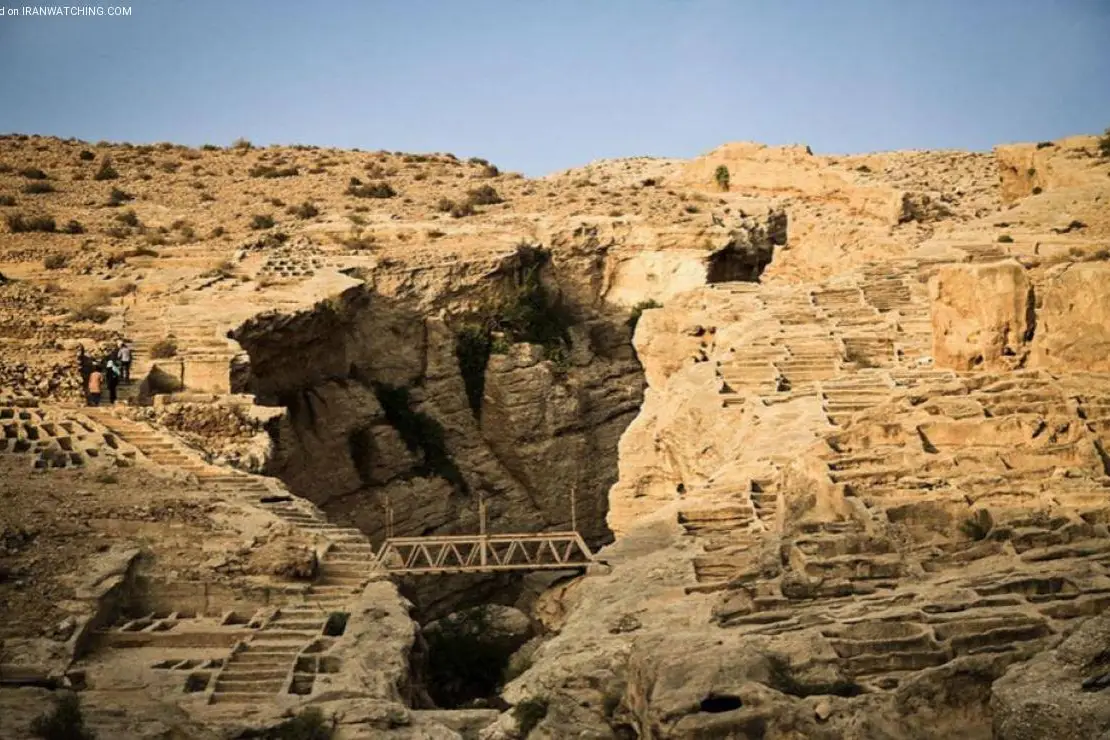
Explore Qazvin with Visit Our Iran
Qazvin, a city steeped in history and culture, is a fascinating destination for travelers seeking to experience Iran’s rich heritage. Known for its historical sites, exquisite architecture, and vibrant bazaar, Qazvin offers a unique blend of ancient traditions and modern life. The city’s diverse attractions give visitors a deep dive into its storied past.
If you want to explore Qazvin, our Iran tour packages offer comprehensive and well-curated experiences covering the city’s most significant landmarks and hidden gems. Our knowledgeable guides and well-planned itineraries ensure you get the most out of your visit. Contact us for support and to start planning your unforgettable journey into the heart of Qazvin’s heritage.


